by Bill Murray
Fourteen months ago I wrote a 3QD column titled Among The Non-Humans about sometimes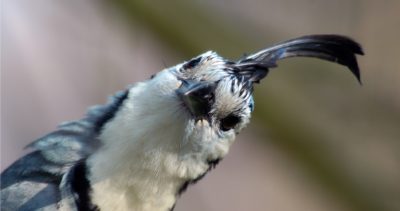 obscure, often extraordinary abilities of animals and plants. Today, let’s look at a few more:
obscure, often extraordinary abilities of animals and plants. Today, let’s look at a few more:
Groupers visit giant moray eels resting in their crevices and shake their heads three to six times a second directly in front of the eels, usually a few centimetres away from the moray’s heads, to recruit them to hunt together. • Parrots demonstrate self-control and can delay gratification by not eating an immediate low-quality reward in favor of a delayed high value reward. • When certain tiger moths hear bats echolocating, they turn on a jamming signal that clicks 4,500 times a second, throwing off bat ranging. The moths usually win. • Vampire bats give other bats food to save them from starvation. • Bumblebees will give up sleep to care for their hive’s young, and can remember good and bad experiences, hinting at a form of consciousness. • Chimpanzees help each other get tools that are out of reach • Swimming at speed, the bluefin tuna’s top fins retract into their bodies, and they swim at seventy kilometres an hour, faster than a great white shark. So perfectly evolved are they for powering through the ocean, Pentagon-funded scientists have used the tuna body-shape as a model for the US Navy’s underwater missiles.
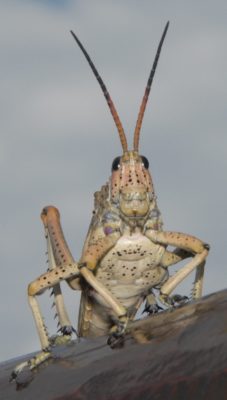
• Bonobos provide help even to strangers. • Sunny and Ned, a shingleback lizard couple, had been a couple for 27 years and were still going strong when the study ended, like some of the animal kingdom’s most famous long-term couplers, such as albatrosses, prairie voles and owl monkeys, confounding expectations many people have about the personalities of lizards. • African grey parrots help each other in times of need. • A juvenile bar-tailed godwit flew 13,560 kilometers without stopping, from Alaska to Tasmania. • Leatherback sea turtle hatchlings and embryos make sounds while still in their eggs, before they hatch, to coordinate the moment of their birth. • A cheetah named Sarah ran 100 meters on a USA Track & Field-certified course in 5.95 seconds. Usain Bolt, the fastest human in history, took 9.58 seconds. • Cuckoos lay eggs in grey warblers and other smaller birds’ nests. The cuckoo egg’s incubation period is shorter so it hatches earlier. This is brood parasitism, in which an animal uses a member of another species to feed its young. • Groupers and other coral reef fishes are known to form hunting associations with octopuses. These events can last over an hour. • Seabirds can adjust their foraging behavior to find new food sources, such as those found in urban environments. • Rhesus monkeys respond differently to risky and riskless choices, suggesting they are individuals just like you and me. • Shrimp that experience daily threatening experiences (being chased by a net) show anxiety-like behaviors. • Honeybees recognize faces, use tools, make collective decisions, dance to communicate and appear to understand higher-order concepts like the idea of zero. • Pea plants can learn behavior from experience, identify the sound of running water and grow towards it. • From highly streamlined bodies to extensive fat storage, migratory birds have many adaptations that help them cope with punishing long-distance flights including light-coloured feathers and flying at dramatically higher altitudes during the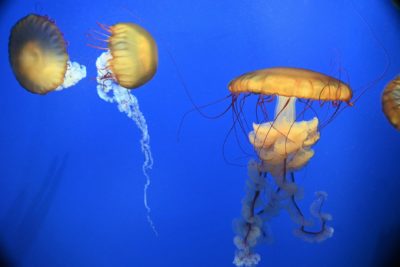 day than at night. • How do migrating birds avoid dehydration after all that flying? They may get water from burning fat. • Insects have ears on antennae (mosquitoes and fruit flies), forelegs (crickets and katydids), wings (lacewings), abdomen (cicadas, grasshoppers and locusts) and on what passes for a “neck” (parasitic flies). Among moths and butterflies, ears crop up practically anywhere, even on mouthparts. The bladder grasshopper has an abundance of ears with six pairs along the sides of its abdomen. Praying mantises have a single, “cyclopean” ear in the middle of their chests. • Globe-skimmer dragonflies’ travel distances rank them among the world’s most cosmopolitan migrators, such as humpback whales and leatherback sea turtles. They traverse entire oceans en masse. • Trees provide nutrients and living spaces for certain ants and the ants in turn defend the trees from herbivores. Scientists have found a continuum from very bold, aggressive colonies that react strongly to any challenge (by herbivorous insects or climbing vines, for example), to colonies that are collectively shy. Trees that have the bolder colonies are less frequently attacked by herbivores. In effect, ant colonies have personalities • Fish exhibit collective behavior to ward off predators. • Feral horses organize herds into multilevel societies, akin to small family units within a larger community • In Japan, one crow population uses traffic to crack open walnuts: The crows drop a nut in front of cars at intersections, and
day than at night. • How do migrating birds avoid dehydration after all that flying? They may get water from burning fat. • Insects have ears on antennae (mosquitoes and fruit flies), forelegs (crickets and katydids), wings (lacewings), abdomen (cicadas, grasshoppers and locusts) and on what passes for a “neck” (parasitic flies). Among moths and butterflies, ears crop up practically anywhere, even on mouthparts. The bladder grasshopper has an abundance of ears with six pairs along the sides of its abdomen. Praying mantises have a single, “cyclopean” ear in the middle of their chests. • Globe-skimmer dragonflies’ travel distances rank them among the world’s most cosmopolitan migrators, such as humpback whales and leatherback sea turtles. They traverse entire oceans en masse. • Trees provide nutrients and living spaces for certain ants and the ants in turn defend the trees from herbivores. Scientists have found a continuum from very bold, aggressive colonies that react strongly to any challenge (by herbivorous insects or climbing vines, for example), to colonies that are collectively shy. Trees that have the bolder colonies are less frequently attacked by herbivores. In effect, ant colonies have personalities • Fish exhibit collective behavior to ward off predators. • Feral horses organize herds into multilevel societies, akin to small family units within a larger community • In Japan, one crow population uses traffic to crack open walnuts: The crows drop a nut in front of cars at intersections, and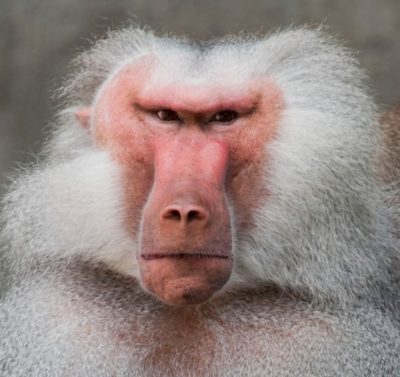 then when the light turns red, they swoop in to scoop up the exposed flesh. • Goldish have driven a vehicle towards a visual target which was observable through the walls of a tank, demonstrating the ability to transfer space representation and navigation skills to a wholly different terrestrial environment. • One study has found that dogs can recognize different languages and nonsense words. • Animals (specifically, a katydid) evolved to make sounds at least 250 million years ago. The fossil record shows a katydid that had the anatomy to do so. • The icefish has a see-through skull and transparent blood. Icefish are the only vertebrates to have no red blood cells. To survive at such low temperatures, it has evolved an anti-freeze protein in its transparent blood that stops ice crystals from growing. • The average giraffe sleeps for just 4.6 hours per day. • Researchers have documented some elephant matriarchs’ total sleep time at just 2 hours per day. • Hippopotamuses recognize the voices of their pod-mates and members of nearby pods, and respond more territorially to strangers. • The monarch butterfly tastes nectar through its feet. • The North American wood turtle stomps its feet on the ground to mimic the patter of rain so that worms come to the surface for them to eat. • During a prey-catching dive or swoop, a peregrine falcon can reach 200 miles per hour. • Hibernating bears can shut down genes involved with the breakdown of bone while they ‘sleep.’ • Bee orchids trick male bees into landing on their flowers by looking and smelling like exotic female bees, then
then when the light turns red, they swoop in to scoop up the exposed flesh. • Goldish have driven a vehicle towards a visual target which was observable through the walls of a tank, demonstrating the ability to transfer space representation and navigation skills to a wholly different terrestrial environment. • One study has found that dogs can recognize different languages and nonsense words. • Animals (specifically, a katydid) evolved to make sounds at least 250 million years ago. The fossil record shows a katydid that had the anatomy to do so. • The icefish has a see-through skull and transparent blood. Icefish are the only vertebrates to have no red blood cells. To survive at such low temperatures, it has evolved an anti-freeze protein in its transparent blood that stops ice crystals from growing. • The average giraffe sleeps for just 4.6 hours per day. • Researchers have documented some elephant matriarchs’ total sleep time at just 2 hours per day. • Hippopotamuses recognize the voices of their pod-mates and members of nearby pods, and respond more territorially to strangers. • The monarch butterfly tastes nectar through its feet. • The North American wood turtle stomps its feet on the ground to mimic the patter of rain so that worms come to the surface for them to eat. • During a prey-catching dive or swoop, a peregrine falcon can reach 200 miles per hour. • Hibernating bears can shut down genes involved with the breakdown of bone while they ‘sleep.’ • Bee orchids trick male bees into landing on their flowers by looking and smelling like exotic female bees, then load the duped insects with pollen. • Evening primroses can “hear” their pollinators and fire up nectar production when exposed to their specific vibration frequencies. • Geese can stand comfortably on ice and squirrels in snow in their bare feet because of the close proximity of the arteries and veins in their extremities, allowing the core of their bodies to remain warm while limiting heat loss when the extremities are cold. • Photosensory receptors mediate cooperative rather than competitive interactions among kin neighbours of Arabidopsis thaliana, a small flowering plant native to Eurasia and Africa, by reducing the competition for local resources. • Mole rats have their own vocal signature and each colony has its own distinct dialect, passed down culturally over generations. • The Hercules moth, found in northern Queensland, can grow to have a wingspan of thirty-six centimeters—the diameter of a car’s steering wheel. • Bats remember favors and hold grudges; socially distance and go quiet when ill; and use vocal labels that reveal individual and kin identity. Male bats learn territorial songs in specific dialects from their fathers and, much like birds, sing these songs to defend territory and attract mates. Scientists characterize this as culture. • Robins get ‘road rage’ when exposed to traffic noise • In polar regions, fish have special “antifreeze proteins” that bind to ice crystals in their blood to prevent widespread crystallization. • Various types of tardigrades, or ‘little water bears,’ have been found at 20,000 feet and at ocean depths of 13,000 feet. And under 16 feet of ice.
load the duped insects with pollen. • Evening primroses can “hear” their pollinators and fire up nectar production when exposed to their specific vibration frequencies. • Geese can stand comfortably on ice and squirrels in snow in their bare feet because of the close proximity of the arteries and veins in their extremities, allowing the core of their bodies to remain warm while limiting heat loss when the extremities are cold. • Photosensory receptors mediate cooperative rather than competitive interactions among kin neighbours of Arabidopsis thaliana, a small flowering plant native to Eurasia and Africa, by reducing the competition for local resources. • Mole rats have their own vocal signature and each colony has its own distinct dialect, passed down culturally over generations. • The Hercules moth, found in northern Queensland, can grow to have a wingspan of thirty-six centimeters—the diameter of a car’s steering wheel. • Bats remember favors and hold grudges; socially distance and go quiet when ill; and use vocal labels that reveal individual and kin identity. Male bats learn territorial songs in specific dialects from their fathers and, much like birds, sing these songs to defend territory and attract mates. Scientists characterize this as culture. • Robins get ‘road rage’ when exposed to traffic noise • In polar regions, fish have special “antifreeze proteins” that bind to ice crystals in their blood to prevent widespread crystallization. • Various types of tardigrades, or ‘little water bears,’ have been found at 20,000 feet and at ocean depths of 13,000 feet. And under 16 feet of ice. 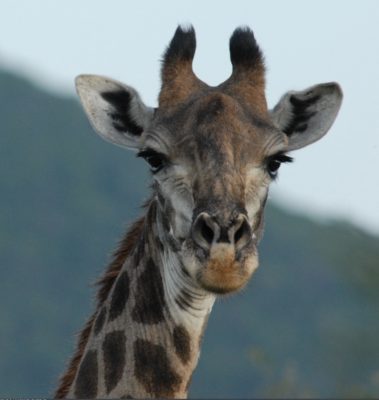
•••••
There are many more facts like these in Ed Wong’s An Immense World, a recent book about animal senses that found an immense audience. And if you’ve just happened by this article today and aren’t a regular 3QD reader, please enjoy Brooks Riley’s brilliant essay on listening in the animal and human worlds that appeared in last week’s 3QD.
•••••
I write things like this three times a week at Common Sense and Whiskey.
